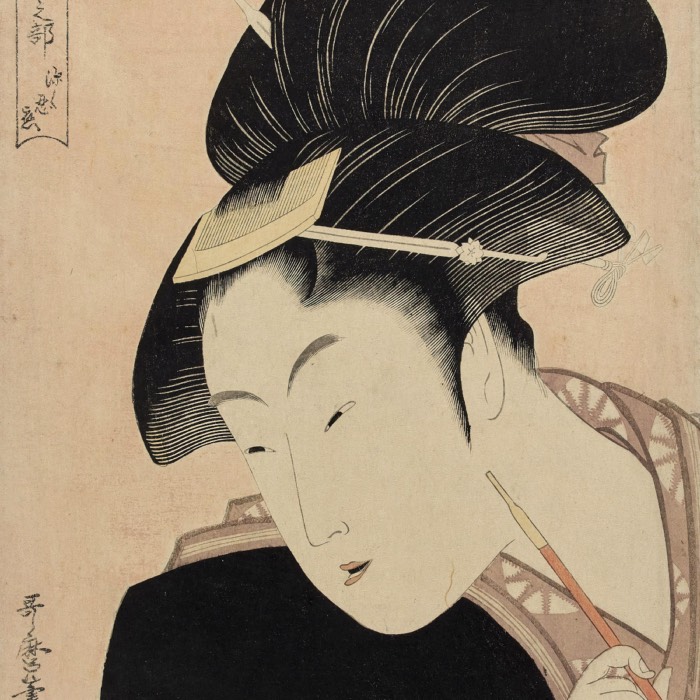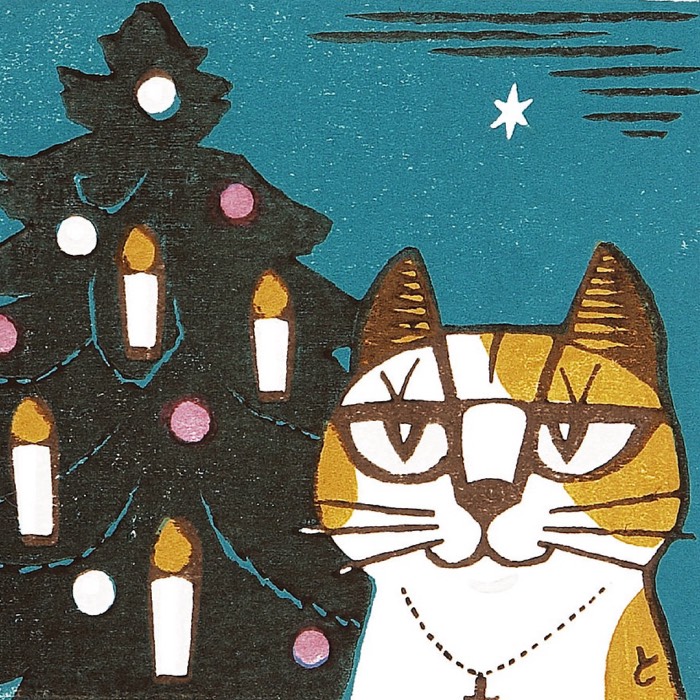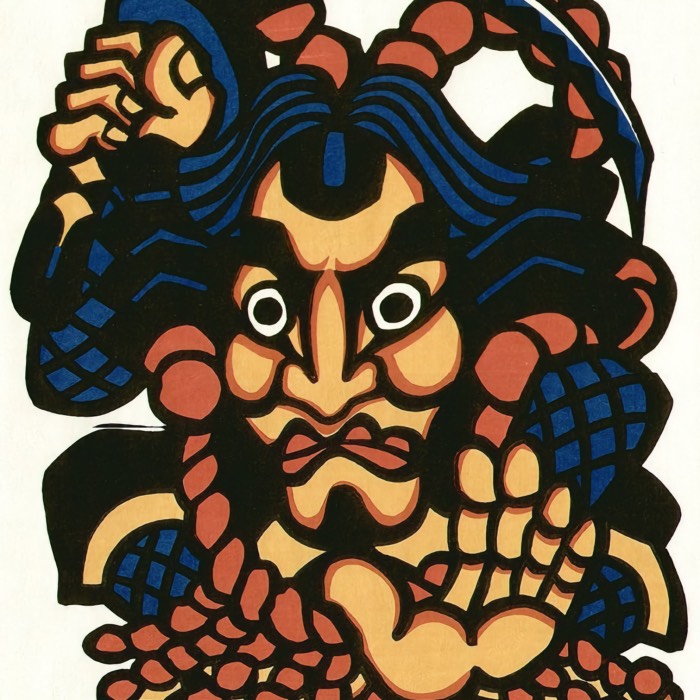Totoya Hokkei: The master of surimono
Totoya Hokkei (1780-1850) was a Japanese ukiyo-e artist and printmaker who specialized in the creation of surimono, a type of privately published print that flourished in the late Edo period (1603-1868). Hokkei was a master of this art form, known for his intricate designs, meticulous craftsmanship, and innovative use of color and composition. In this post, we will explore the life and work of Totoya Hokkei, highlighting some of his most famous surimono prints.
 Mount Fuji above the clouds. Wikimedia Commonsꜛ (license: public domain)
Mount Fuji above the clouds. Wikimedia Commonsꜛ (license: public domain)
Biography
Totoya Hokkei (魚屋 北渓), born Nakagawa Masahiro in 1780 in Edo (now Tokyo), Japan, was a prominent ukiyo-e artist during the late Edo period. He is best known for his surimono prints—exquisite, privately commissioned works often created for special occasions. Hokkei was a student of the legendary Katsushika Hokusai, and while he may not be as widely recognized as his master, his contributions to the ukiyo-e tradition are significant, particularly with regard to surimono.
Early life and training
Hokkei was born into a family of fishmongers, which influenced his early interest in depicting scenes from everyday life. His family background provided him with a unique perspective on the lives of the common people in Edo, which later became a recurring theme in his work.
At a young age, Hokkei showed a talent for drawing, which led him to pursue a career in art. He initially trained as a fishmonger, like his father, but his passion for art drew him towards the world of ukiyo-e. He began his artistic training under the guidance of several masters, but it was under Katsushika Hokusai](/weekend_stories/told/2024/2024-08-14-kitagawa_utamaro/) that Hokkei truly flourished. Hokusai, known for his innovative and versatile style, had a profound influence on Hokkei’s artistic development.
Under Hokusai’s mentorship, Hokkei absorbed a wide range of techniques and styles. Hokusai’s emphasis on versatility and experimentation encouraged Hokkei to explore various genres within ukiyo-e, from landscapes (fūkei-ga, meisho-e) and portraits (ōkubi-e) to still life (e.g., kachō-ga) and allegorical scenes.
Artistic career
Hokkei’s career began in the early 1800s, a time when ukiyo-e was transitioning into a more diverse and commercially viable art form. He started by creating woodblock prints and illustrations for books, as many ukiyo-e artists did, but he quickly gained a reputation for his skill in producing surimono. These privately commissioned prints were often more elaborate and detailed than standard ukiyo-e, as they were intended for special occasions like New Year’s greetings, poetry gatherings, and other cultural events.
Unlike the mass-produced ukiyo-e prints that were sold in shops, surimono were usually commissioned by poetry societies or wealthy patrons and were not meant for public sale. As such, they were printed in smaller quantities, often with luxurious materials, including metallic pigments and high-quality paper. This allowed Hokkei to showcase his meticulous attention to detail and his ability to combine text and image harmoniously.
In addition to surimono, Hokkei produced a variety of other works, including illustrated books, prints of legendary heroes (musha-e), and landscapes (fūkei-ga). His work is characterized by its elegant compositions, refined use of color, and a delicate balance between image and text.
Later life and legacy
Totoya Hokkei remained active in the ukiyo-e community until his death in 1850. Despite being a student of Hokusai, Hokkei developed his own distinct style that set him apart from his contemporaries. His work, particularly with regard to surimono, is celebrated for its sophistication and artistic finesse.
Hokkei’s influence can be seen in the work of later ukiyo-e artists, particularly those who continued the tradition of surimono. Although he did not achieve the same level of fame as some of his peers, Hokkei’s contributions to the art of ukiyo-e have ensured his place in the history of Japanese art.
Style and significance
Master of surimono
Hokkei is best known for his mastery of surimono — a genre of ukiyo-e that combines poetry and visual art. Surimono were often commissioned by members of poetry clubs, who sought to commemorate special events with these finely crafted prints. Hokkei’s surimono are distinguished by their intricate detail, elegant compositions, and the harmonious integration of text and image. They are characterized by their balanced and thoughtful compositions. He often used asymmetry to create a dynamic visual flow, guiding the viewer’s eye across the image and text in a way that felt natural and cohesive.
Hokkei employed a subtle palette, often using soft colors to enhance the refined nature of his prints. He also made use of luxurious materials such as metallic pigments and high-quality paper, which added a sense of opulence to his surimono.
In Hokkei’s surimono, the interplay between poetry and image is central to the overall effect. The text, often composed by members of the poetry societies that commissioned the works, was carefully integrated into the design, complementing the visual elements without overpowering them.
Diversity of themes
While Hokkei is best known for surimono, he also explored a wide range of themes in his other works:
- Mythology and folklore (yūrei-zu): Like many ukiyo-e artists, Hokkei drew inspiration from Japanese mythology and folklore. He depicted scenes from famous stories and legends, often imbuing them with a sense of drama and movement.
- Nature and still life (kachō-ga): Hokkei had a particular talent for depicting nature and still life, often focusing on simple yet elegant compositions. His works in this genre display a keen attention to detail and a deep appreciation for the beauty of the natural world.
- Portraits and figures (ōkubi-e): Although less prolific in this area compared to other ukiyo-e artists, Hokkei did produce a number of portraits and figure studies. His approach to these subjects was often more understated, emphasizing grace and subtlety over bold expression.
Significance
Totoya Hokkei’s significance in the history of ukiyo-e lies in his exceptional skill as a surimono artist. While he may not have achieved the widespread fame of his mentor Hokusai or contemporaries like Hiroshige, his work in surimono has been highly regarded for its artistic quality and sophistication. Hokkei’s ability to merge text and image seamlessly in his prints reflects a deep understanding of both visual and literary arts, making his contributions to ukiyo-e particularly noteworthy.
Notable works
Totoya Hokkei produced numerous works throughout his career, many of which were surimono:
 Beauty in a Boat during a Rainstorm, 1804. Wikimedia Commonsꜛ (license: public domain)
Beauty in a Boat during a Rainstorm, 1804. Wikimedia Commonsꜛ (license: public domain)
 Head of a Salmon, c. 1815–25. Wikimedia Commonsꜛ (license: public domain)
Head of a Salmon, c. 1815–25. Wikimedia Commonsꜛ (license: public domain)
 Courtesan Riding a Lion, c. 1830s. Wikimedia Commonsꜛ (license: public domain)
Courtesan Riding a Lion, c. 1830s. Wikimedia Commonsꜛ (license: public domain)
 Benzaiten Shrine on Chikubu-shima, 1821. Wikimedia Commonsꜛ (license: public domain)
Benzaiten Shrine on Chikubu-shima, 1821. Wikimedia Commonsꜛ (license: public domain)
 Nagato mekari shinji (The Seaweed-gathering Ritual at Nagato), from the series Famous Places in the Provinces (Shokoku meisho). Wikimedia Commonsꜛ (license: public domain)
Nagato mekari shinji (The Seaweed-gathering Ritual at Nagato), from the series Famous Places in the Provinces (Shokoku meisho). Wikimedia Commonsꜛ (license: public domain)
 Tōto Kinryūzan Sensō-ji zu, 1820. Wikimedia Commonsꜛ (license: public domain)
Tōto Kinryūzan Sensō-ji zu, 1820. Wikimedia Commonsꜛ (license: public domain)
Conclusion
Totoya Hokkei, though perhaps less widely known than some of his contemporaries, made a lasting impact on the world of ukiyo-e, particularly through his work in surimono. His ability to harmonize text and image, combined with his elegant compositions and delicate use of color, has earned him a respected place in the history of Japanese art. Hokkei’s legacy is one of refinement and sophistication, and his work should be seen as an important contribution to the cultural richness of the Edo period.
References and further reading
- Totoya Hokkei on ukiyo-e.orgꜛ
- Wikipedia article on Totoya Hokkeiꜛ
- Woldemar von Seidlitz, Dora Amsden, Ukiyo-e, 2016, Parkstone International, ISBN: 9781785257391
- Amy Reigle Newland, The Hotei encyclopedia of Japanese woodblock prints, 2005, Hotei Publishing, ISBN: 9789074822657
- Rebecca Salter, Japanese Woodblock Printing, 2002, University of Hawaii Press, ISBN: 9780824825539
- Richard Lane, Masters of the Japanese print, their world and their work, 2021, Hassell Street Press, ISBN: 9781015300231
- Andreas Marks, Japanese Woodblock Prints - Artists, Publishers And Masterworks: 1680 - 1900, 2010, Tuttle Publishing, ISBN: 9784805310557













comments